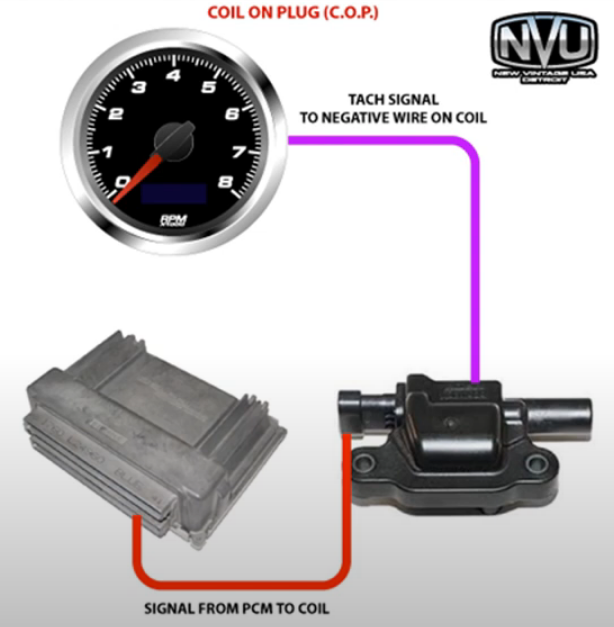
Most tachometers nowadays rely on an electronic signal from the vehicle’s ignition system to deliver a precise RPM reading.
OK, easy enough.
Problem is, there are plenty of differences between vehicle ignition setups—both stock and aftermarket. That means there’s no “one size fits all” solution to installing a tachometer.
That’s why we’re glad the gauge gurus at New Vintage USA came up with this incredibly detailed video. It covers several of the most common stock and aftermarket ignition systems from popular manufacturers, and shows you how to find and use each ignition system’s tachometer signal to drive your tach.
At over eight minutes long, the video is packed with vital pointers, installation tips, and general guidelines to show you exactly how to wire-up your vehicle’s tachometer. It covers everything from HEI ignitions, digital ignition boxes, coil-on-plug setups, and even diesel applications. You’ll learn about topics like how a tachometer works, basic electrical theory, and troubleshooting.
Installing a tachometer anytime soon? This video is a must-watch. Check it out below:

I have a classic 1967mercury cyclone in instrument cluster tach. It’s a two wire one black and one red. How do I check it out of the car.
Hey Robert, does your tach look like this?
…
Even if it doesn’t, you should read this story on gauge troubleshooting because it includes a section on Tachometers, specifically ones from Ford.
Hi NVU Tech Support
Do all modern stepper motor technology tach. gauges use a square waveform to function ?
I am using a delco 10SI alternator with the R terminal ,sends out a sine waveform (pre rectified ),then has
to go through an adapter to convert this to square wave to the gauge. This is to allow for alternator rpm
readout via the tach. gauge?
Hello Spiro – this is the blog supported by Summit Racing, you can reach the NVU Tech Support folks here. . You can also contact the Summit Racing tech Support, they’ll be able to help you too.